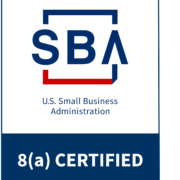Like all responsible organizations, you are most likely 100% committed to great communication and accessibility. So…
-
- Can your Deaf, Hard of Hearing, or DeafBlind clients count on you to provide communication access to them?
- Do you have events like meetings, training sessions, or press conferences needing American Sign Language?
- Do you have online content, videos, or training information that need to be adapted for accessibility?
- Without communication solutions, imagine how easily Deaf clients or employees can be left out.
To deliver effective communication and be that great organization you truly are, reach out to Graham Interpreting.
Our Services
Graham offers several communication services
American Sign Language (ASL)
A natural language used by members of the Deaf community in the United States and parts of Canada. ASL, unlike PSE and SEE, is a rule- governed communication system and exhibits all of the features of language. ASL is a visual language without a written form. ASL is produced through signs, body language, movement, and facial expressions. ASL is the most commonly requested interpreting service.
Virtual Interpreting
Video Remote Interpreting (VRI) uses secure videoconferencing technology to provide Deaf consumers with a qualified interpreter in real-time, when an onsite interpreter is not readily available, or when individuals must communicate remotely due to other constraints.
CART Services (Communication Access Realtime Translation)
Similar to captioning, CART is a professional service that can be delivered on location or remotely. The National Court Reporters Association (NCRA) describes CART services as “the instant translation of the spoken word into English text using a stenotype machine, notebook computer and realtime software.” The text produced by the CART service can be displayed on an individual’s computer monitor, projected onto a screen, combined with a video presentation to appear as captions, or otherwise made available using other transmission and display systems.
Certified Deaf Interpreters (CDIs)
Deaf individuals who serve as language specialists in order to provide a perspective of communication that hearing interpreters do not inherently have. DI’s have specialized training and/or experience in the use of gesture, mime, props, drawings and other tools to enhance communication. Deaf Interpreters possess native or near-native fluency in American Sign Language and are recommended for a broad range of assignments where an interpreter who is Deaf or hard of hearing would be beneficial, such as with a client who is Deaf and also cognitively low-functioning.
Trilingual Interpreting – ASL/Spanish/English
Trilingual interpreters are competent in three languages and their regional varieties. They understand and appropriately apply a variety of cultural norms and seamlessly facilitate communication between Spanish, English, and ASL in real-time for Deaf individuals.
Captions for Video - Section 508 Compliance
Graham Interpreting helps federal agencies across the nation abide by the laws and requirements of “Section 508 of the Rehabilitation Act.” Under Section 508, all videos and multimedia productions must have accurate Captions for videos. This allows videos and content to be accessible to Deaf/Hard of Hearing individuals
Audio Descriptions - Section 508 Compliance
Audio Descriptions (also called descriptive video or video descriptions) are added to videos or multi-media productions to increase accessibility to the information for individuals who are Blind or low vision. Under “Section 508 of the Rehabilitation Act” federal agencies are required to have Audio Descriptions on all videos and multimedia productions. Graham Interpreting provides Audio Descriptions for pre-recorded videos or productions. These consist of an additional audio track that describes and gives context for essential visual information. Audio Descriptions capture what is happening on screen into audible descriptions that are played during natural pauses in the audio track.
Tactile Interpreting (for Deaf-Blind)
A method of communication for those who are blind and Deaf or hard of hearing. The tactile interpreter will place their hand(s) on top of or below the Deaf person’s hand(s). The interpreter will make tactile signs on the person’s hand so that they can feel and understand what’s being said. Tactile interpreters communicate the conversation as well as offering a visual description of the speaker’s facial features, body language, and the environment, providing their client with the same access and experience as other attendees.
Pidgin Signed English
Also referred to as contact signing, was developed through a mixing of ASL and English. This type of signing, like ASL, has no written form. This variety of signing arises from contact between sign language and an oral language. It is common in signing communities that are exposed to hearing communities.





